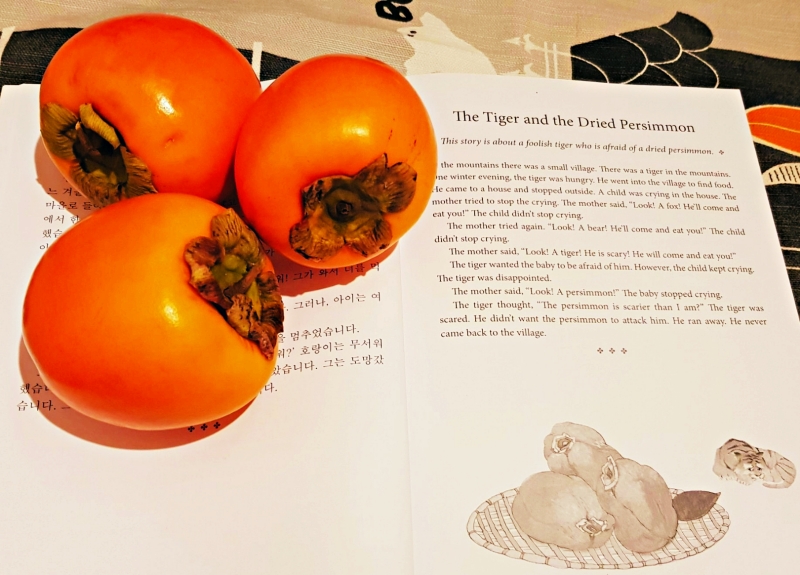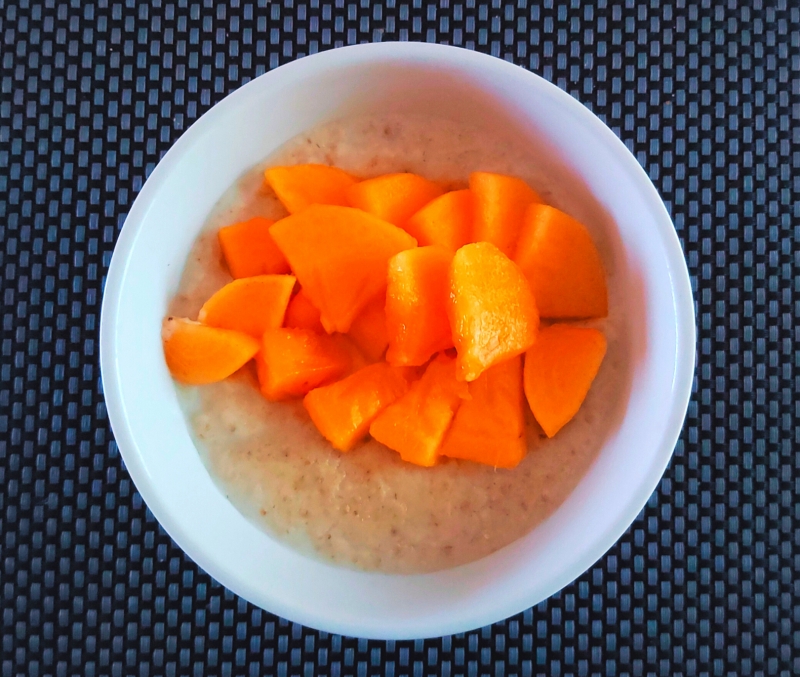- 한국어
- English
- 日本語
- 中文
- العربية
- Español
- Français
- Deutsch
- Pусский
- Tiếng Việt
- Indonesian
By Honorary Reporter Marianna Szucs from Hungary
Photos = Marianna Szucs
Persimmon is associated with autumn and Chuseok (Korean Thanksgiving). In fall, this popular fruit is plentiful in Korea as an essential element of one of Korea's two biggest holidays.
Usually consumed raw and used to make the traditional cinnamon drink sujeonggwa, this sought-after fruit is rich in potassium, manganese, magnesium, and vitamins A and C. Besides being healthy, the beverage has a beautiful orange color and a sweet, honey-like taste that perfectly fit the season.
I developed a craving for persimmon after reading the traditional Korean folktale "The Tiger and the Dried Persimmon," which is one of my favorite stories. Whenever I read this funny and clever tale, I feel the same lingering amusement.

Persimmon is a crucial part of one of my favorite Korean folk tales.
The story goes like this. Somewhere in the mountainous regions of Korea, a hungry tiger searches for prey during winter. Finding no food, he enters a village to get some. He hears a baby crying and moves in to get his meal. The mother tries to stop her baby from crying by telling her that wild animals are approaching the house and will eat them if they hear noise. The baby, however, keeps crying even after being confronted by the tiger.
The tiger is disappointed to see that the baby isn't afraid of him. Such disappointment turns into shock and fear, however, when the mother says, "Look, a dried persimmon!" The child stops crying instantly. The tiger flees never to return as he thinks the fruit must be more powerful than he is since it got the baby to stop crying. This ending is one of three that this story has.
I love how foolish and vulnerable the tiger is in the story. This is typical in traditional Korean folklore, in folk tales and minhwa (folk art) paintings alike. Koreans tried to present the strong and almighty feline as a caricature of its original mischievous and fearful character so that people would get less frightened of this majestic animal. I've read stories and admired minhwa paintings where the tiger's depiction is rather grotesque.

My Chuseok breakfast consisted of porridge with persimmon. (Marianna Szucs)
I grew curious over the fruit's shape and taste but it was a challenge to find it in the U.K. So when I finally saw three at a tiny Asian supply store, I bought all of them. They felt like a prestigious award after my chase for them.
I looked online for how Koreans eat persimmon, so I carefully peeled and cut them into bite-size pieces. I snuggled up on my cozy sofa at the reading corner. To celebrate, I read the folktale again while eating the soft and sweet-tasting fruit. I've since eaten persimmon numerous times but nothing compares to the excitement of that first-time experience.
As I love experimenting with food, I've use persimmon as a topping for one of my favorite breakfast meals: porridge. I highly recommend this as it's super delicious and the fruit complements the porridge perfectly. Look at it carefully to see how it resembles the image of a full moon. I always make porridge on Chuseok mornings to observe the holiday.
kalhong617@korea.kr
*This article is written by a Korea.net Honorary Reporter. Our group of Honorary Reporters are from all around the world, and they share with Korea.net their love and passion for all things Korean.